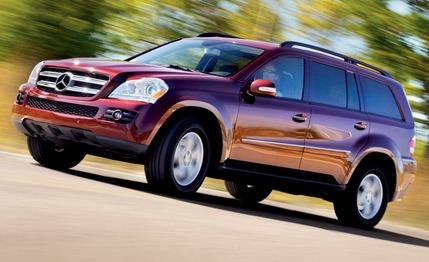 Mini Test Road Test
Mini Test Road Test
In 1998, the National Highway Transportation Safety Administration recognized the need for small, neighborhood-only vehicles that did not go fast enough to merit full certification as conventional automobiles. So NHTSA created a new classification called LSV, or Low Speed Vehicle, presently street legal in 44 states.
But that was 10 years ago, and gasoline was $1.10 a gallon, so no one paid attention.
Suddenly, they are. The LSV category, led by the Chrysler-owned Global Electric Motorcars, or GEM, is expanding wildly. The problem is that LSVs are limited to 25 mph, and most LSVs, like the GEM models, have more in common with golf carts than cars.
Except for one: the ZENN, which stands for Zero Emissions, No Noise. It’s the French Microcar MC-2, sold there with a gasoline or diesel engine. The ZENN is imported without a drivetrain from France to Québec, where the ZENN Motor Company, founded in 2000, installs a 30-hp electric motor and six sealed lead-acid batteries, two up front under the hood and four in the rear beneath the hatchback. At 120.8 inches, the ZENN is 14.7 inches longer than the Smart Fortwo but slightly narrower and not quite as tall.
Even with two aboard, the ZENN reaches 25 mph a hair quicker than it takes Usain Bolt to cover 100 meters and can squeal its skinny P145/70R-13 Klebers (a Michelin brand) from a standing start. The per-charge range is about 35 miles, less if you squeal those Klebers a lot, less still with the optional air conditioning on. “Some owners turn on the air while it’s still plugged in and cool off the vehicle,” says Jason Brownell, “and then you can limit the use of the air.” Brownell sells the ZENN in Florida, which represents 22 percent of the car’s market. Most of them, as you would suspect, go to California.
Brownell has sold some ZENNs to private individuals, some to companies that use them for security to prowl parking lots. With depleted batteries, recharge time is four hours to 80-percent capacity, eight hours to a full 100 percent. An available “rapid charger” can juice up the car during a one-hour lunch break and sells for $8995. Standard regenerative braking helps a little.
On the road, the ZENN rides and handles a lot like the Fortwo, which is to say it’s abrupt, darty, and not much fun, with a suspension that is surprised by every bump and pothole. The plastic-bodied ZENN does have a standard backup beeper to alert hard-of-hearing pedestrians, of which there may be many in typical ZENN-owner neighborhoods. It has three-point seatbelts, but that’s all the safety equipment required by LSV regulations—doors aren’t even required.
In most areas—federal LSV standards can be, and often are, amended locally—the LSV must be capable of a minimum speed of 20 mph and a maximum of 25 and can be driven on roads where the speed limit is 35 mph or less. But most LSVs, the ZENN included, can go faster if you know which computer chip to change or which wire to cut. Reportedly, the ZENN can reach 40 mph, and many LSV owners make the modifications.
Inside, the ZENN’s thin cloth-covered seats are tolerable, and overall interior trim and build quality aren’t that bad. It’s plenty roomy for two adults, and there’s 13 cubic feet of storage space in the rear, accessible beneath the hatchback. Power windows, keyless entry, carpeting, and a heater are standard. The optional JVC stereo ($295) is fine, as is the air conditioning, “a $2200 value” that ZENN, at this writing, is including at no charge.
Which is not to say the ZENN is cheap, because it isn’t: The base price is $17,245, including an optimistic $1250 delivery fee, and the one we drove topped out at $17,540.
Is it worth it? Sure, if you’re wealthy enough to make a point to fellow Sierra Club members. All others who do not have Ed Begley Jr. on speed dial: Good luck explaining it to your accountant.